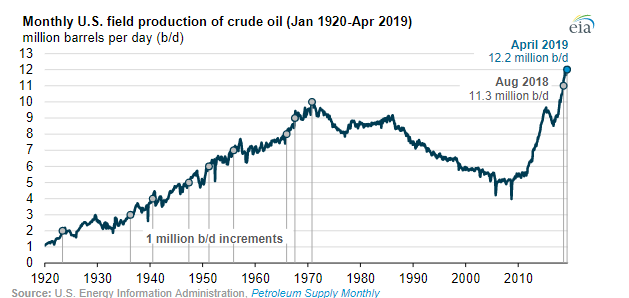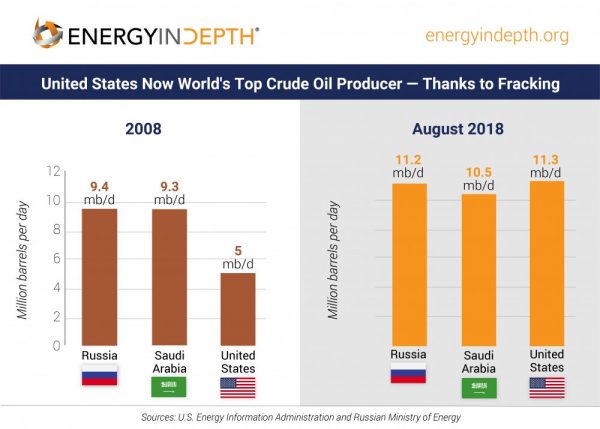U.S. Crude Oil Production Reaches Another Milestone

On the heels of news in April that Texas and New Mexico’s Permian Basin is the highest producing oilfield in the word, we now know that the United States hit another record that same month, thanks in large part to production in that region.
U.S. crude oil production reached 12.2 million barrels per day in April, according to EIA’s latest Petroleum Supply Monthly. Last August U.S. production hit 11.3 million barrels per day for the first time, but that record has now been eclipsed not even a year later. The Permian continues to drive record national oil production growth, as EIA explained:
“The Permian’s prolific tight oil plays with multiple layers—including the Bone Spring, Spraberry, and Wolfcamp—make it one of the lower-cost areas to develop. The Permian Basin accounts for about 63% of Texas and 96% of New Mexico crude oil production. From January 2018 to April 2019, Texas crude oil production increased by 1.1 million b/d (28%) and New Mexico production increased by 345,000 b/d (64%).”
The continued record-breaking production means the United States is becoming even less reliant on foreign oil sources, providing energy security here at home and allowing for greater exports to help decrease trade deficits. The United States surpassed Russia and Saudi Arabia to become the top global crude oil producer in July 2018.

Along with increasing American energy independence, producing record amounts of energy also increases economic growth. Energy companies invested $10 billion just last year in the Permian basin. Along with that capital, millions more are being invested in upgrading and expanding refineries and creating new infrastructure to accommodate the increased production.
The growth and activity are having a significant, positive economic impact on producing states like Texas. A report out this week from economic researchers The Perryman group found that because of these new investments the energy sector directly or indirectly supports about one in every six jobs in Texas. From the report:
“The current total annual economic benefits of the Texas energy sector (oil and natural gas exploration and production as well as related industries) is estimated to include total expenditures of $557.4 billion, gross product of $198.8 billion, and personal income of $120.6 billion, as well as more than 1.9 million jobs (including multiplier effects).”
Importantly, this growth in U.S. production and the benefits it generates are pegged to continue growing. The United states will account for almost a quarter of global oil and natural gas supply by the early 2030s, the head of Rystad Energy said recently. And EIA forecasts steady increases in oil production for the foreseeable future, helping to keep the United States energy independent while continuing to add jobs and positive economic returns.

No Comments